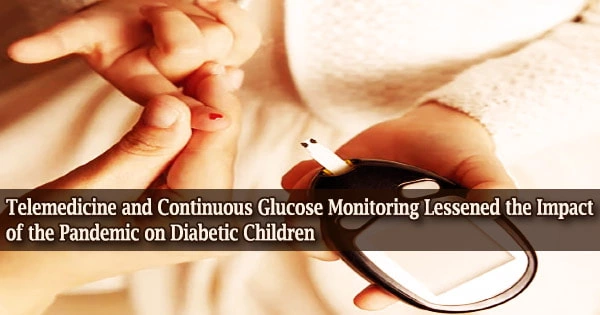According to a recent study from UT Southwestern researchers, the rapid uptake of telemedicine and increasing usage of continuous glucose monitoring helped to lessen the effects of the COVID-19 epidemic on kids with Type 1 diabetes.
When shutdowns started in 2020, the pandemic had a significant impact on illness management, creating obstacles for people who lost their jobs and insurance and escalating already-existing health inequities. According to several studies, the pandemic made it harder for diabetic individuals to receive care and decreased their glucose control.
“Our diabetes team implemented telemedicine visits within weeks of the shutdown, allowing us to provide care to our patients in an efficient and timely manner,” said Abha Choudhary, M.D., Assistant Professor of Pediatrics at UT Southwestern and a pediatric endocrinologist at Children’s Health.
“Our team was also able to utilize continuous glucose monitoring for a growing number of patients which may have helped to mitigate some of the challenges brought on by the pandemic.”
Dr. Choudhary and colleagues used data from Children’s Medical Center Dallas to examine how the pandemic affected the care of Type 1 diabetes patients in a big city environment for the study that was published in BMC Pediatrics.
In addition to examining patient variables like insurance status, race, ethnicity, gender, and glucose control, they also compared the use of continuous glucose monitoring in the year before the pandemic’s commencement to that of the pandemic’s first year.
Our diabetes team implemented telemedicine visits within weeks of the shutdown, allowing us to provide care to our patients in an efficient and timely manner. Our team was also able to utilize continuous glucose monitoring for a growing number of patients which may have helped to mitigate some of the challenges brought on by the pandemic.
Abha Choudhary
According to the study, patients’ office visits fell throughout the pandemic, but there was no change in how their diseases were managed; hospitalization and glycemic control rates remained constant.
The findings did, however, draw attention to persistent inequities among patients from low-income and racial minority groups. Black and Hispanic patients, as well as those without commercial insurance, had lower glycemic control and higher hospitalization rates than their white, non-Hispanic, insured counterparts both before and after the epidemic.
Even though patients with commercial insurance used continuous glucose monitoring more frequently overall than those without insurance, this trend was dramatically reversed during the epidemic.
According to Dr. Choudhary, this is probably because Medicaid beneficiaries in Texas were given access to more glucose monitoring equipment during the epidemic.
According to the researchers, the successful introduction of telemedicine and increasing usage of continuous glucose monitoring both played a significant role in preventing worse outcomes in this patient population.
“For all the progress we have made, significant disparities remain with regard to access to some of the tools we think made the biggest differences during the early months of the pandemic,” said Dr. Choudhary.
“From broadband access to the hardware and software that’s so central to diabetes care these days, we’ve only begun to scratch the surface when it comes to addressing disparities in technology and remote patient monitoring.”





